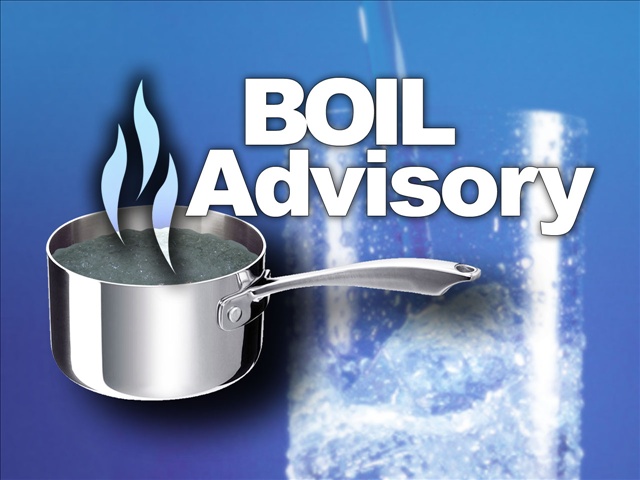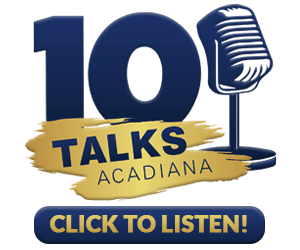
Which Acadiana areas are under a boil advisory?
- Evangeline Parish: Ward 4 Water District has issued a boil advisory until further notice.
- Grand Coteau: Under a boil advisory until further notice due to repair of water main.
- Village of Cankton: Areas along Sibille Airstrip Lane going north on Hwy 343 and going east on Hwy 356 are under a boil advisory until further notice due to a broken flush valve.
- Cade Water System: All customers east of Delaloire Rd. on Smede Hwy, Delaloire Rd., Clover Hill Rd., Granger Rd., South Main Hwy., Pecan Ridge Rd. are under boil advisory due to a main line break.
- Grand Prairie Water System (Precautionary): Line break on Airline Road. Boil advisory until further notice for everyone southwest of Grand Prairie Elementary including Hwy 103, Hwy 748, and all connecting streets, but not the school and Pointe Verte Road.
- Plaisance Water System for the following streets: Government Rd, National, Federal, Hidalgo, MLK extension, Darjean, and Hwy 3040
- Village of Morse: Main line break. Hwy 92 under boil advisory until further notice
Which areas have had recent boil advisories lifted?
- Town of Lake Arthur (2/12)
- Milton Water System (2/20)
- Opelousas (2/23)
- Mire-Branch Water (2/24)
What do I need to do in a boil advisory?
- Bring your water to a full rolling boil for one minute.
- Allow the water to cool before use. Cooling may take up to 30 minutes, so prepare ahead.
- Boil your water for all cooking, washing, brushing teeth, and drinking, including washinhg foods and for use in baby formulas. Boil tap water even if it is filtered, as most kitchen and other household water filters typically do not remove bacteria or viruses.
- Turn off automatic ice makers
- Replace water filters, as they are disposable and may be contaminated, including carbon filters.
- If you don’t like the taste of boiled water, you can try adding a pinch of salt, letting the water stand for a few hours or pouring the cooled boiled water back and forth from one clean glass or container into another to add air to the water, according to the CDC.
If you are unable to boil your water, disinfect it instead.
If tap water is clear:
- Use unscented bleach (bleach that does not have an added scent).
- Add 1/8 teaspoon (8 drops or about 0.75 milliliters) of unscented household liquid bleach to 1 gallon (16 cups) of water.
- Mix well and wait 30 minutes or more before drinking.
- Store disinfected water in clean container with a cover.
If tap water is cloudy:
- Filter water using clean cloth.
- Use unscented bleach (bleach that does not have an added scent).
- Add 1/4 teaspoon (16 drops or 1.5 milliliters) of unscented household liquid bleach to 1 gallon (16 cups) of water.
- Mix well and wait 30 minutes or more before drinking.
- Store disinfected water in clean container with a cover.
- Remember that containers may need to be sanitized before using them to store safe water.
To sanitize containers:
- Use unscented bleach (bleach that does not have an added scent).
- Make a sanitizing solution by mixing 1 teaspoon (5 milliliters) of unscented household liquid bleach in 1 quart (32 ounces, 4 cups, or about 1 liter) of water.
- Pour this sanitizing solution into a clean storage container and shake well, making sure that the solution coats the entire inside of the container.
What does a boil advisory mean?
Cities, towns and water districts may issue a boil advisory whenever pressure in a water main drops below a certain threshold established by the Louisiana Department of Health and Hospitals. This usually happens when there is a major break in a mainline or when repairs are being made in a water line.
The reason a boil advisory is issued is that when pressure is low (below 20 psi), it can allow material from the surrounding soil to enter a water line. When pressure is high, that pressure typically keeps outside material from entering breaks in water lines.
Boil advisories remain in place until fixes are made in the water lines and the Department of Health and Hospitals (DHH) can perform tests on the water to ensure that no outside material, including soil and microbes, can be found in pressurized water. This is usually a 24-48 hour process, though at times, it canlast longer. The boil advisory is lifted when the results from DHH shows “all clear.”
See a Frequently Asked Questions document for more information.
